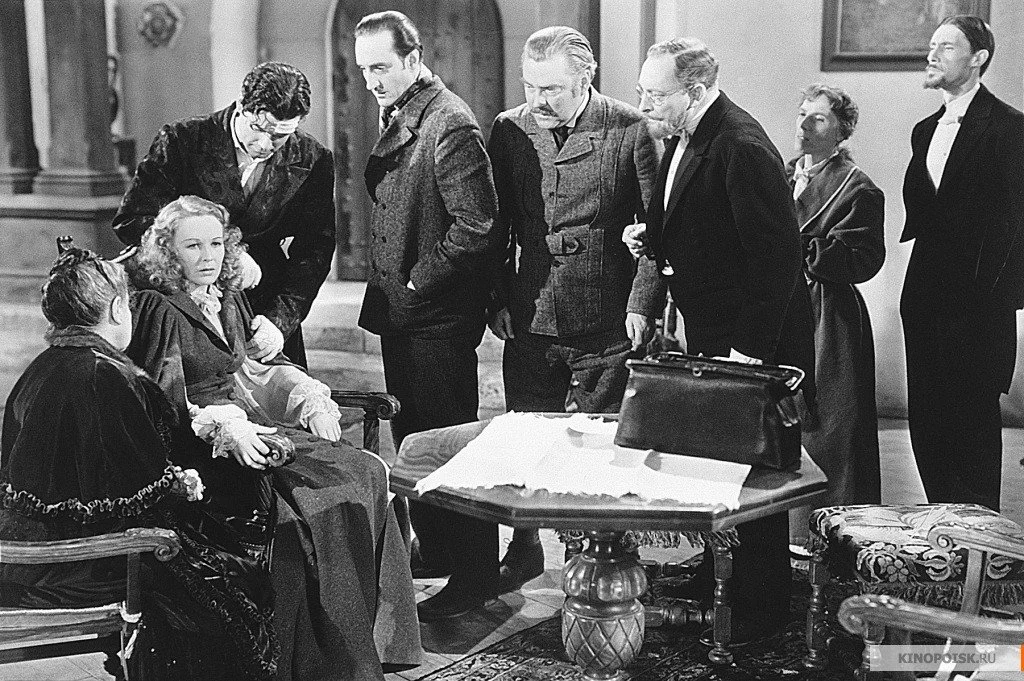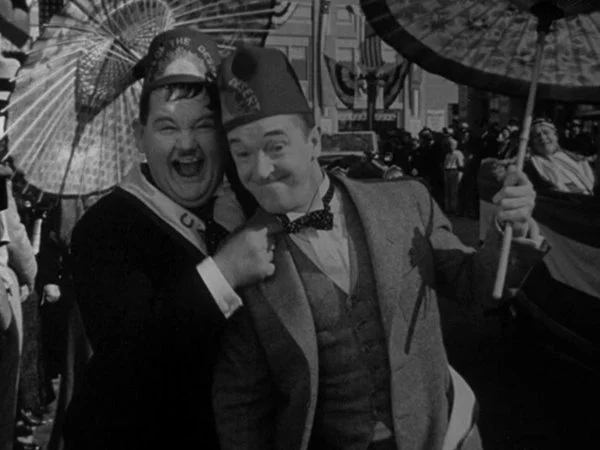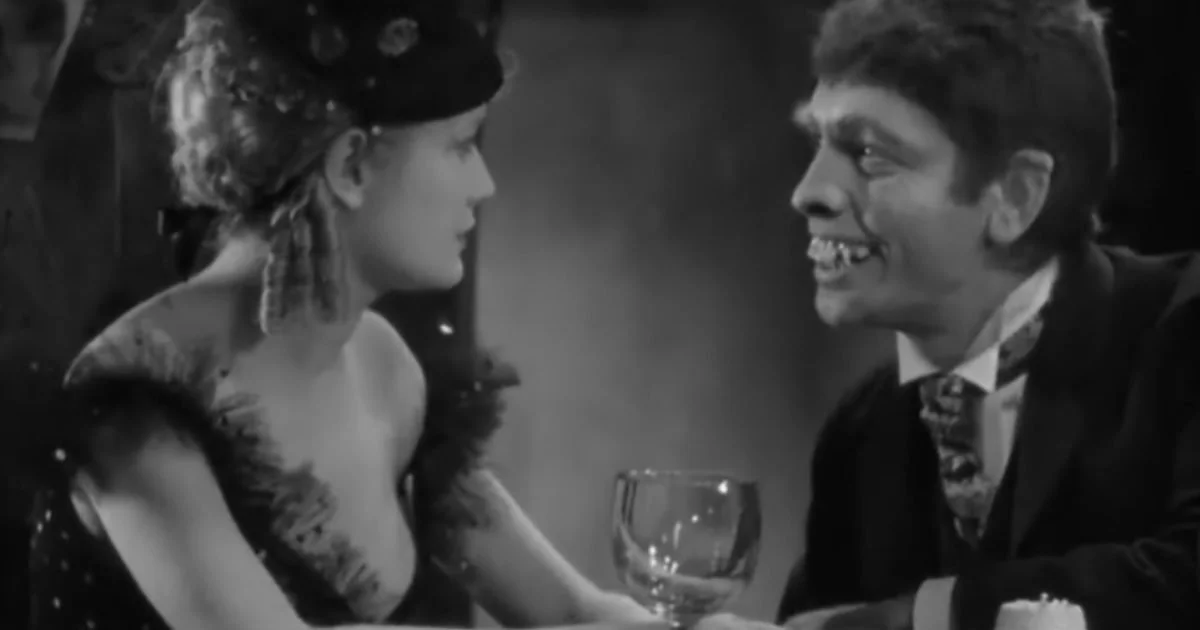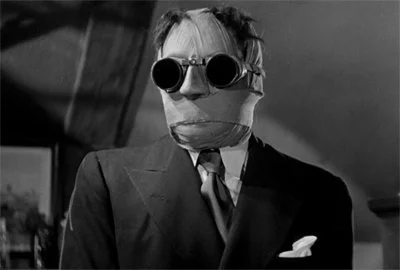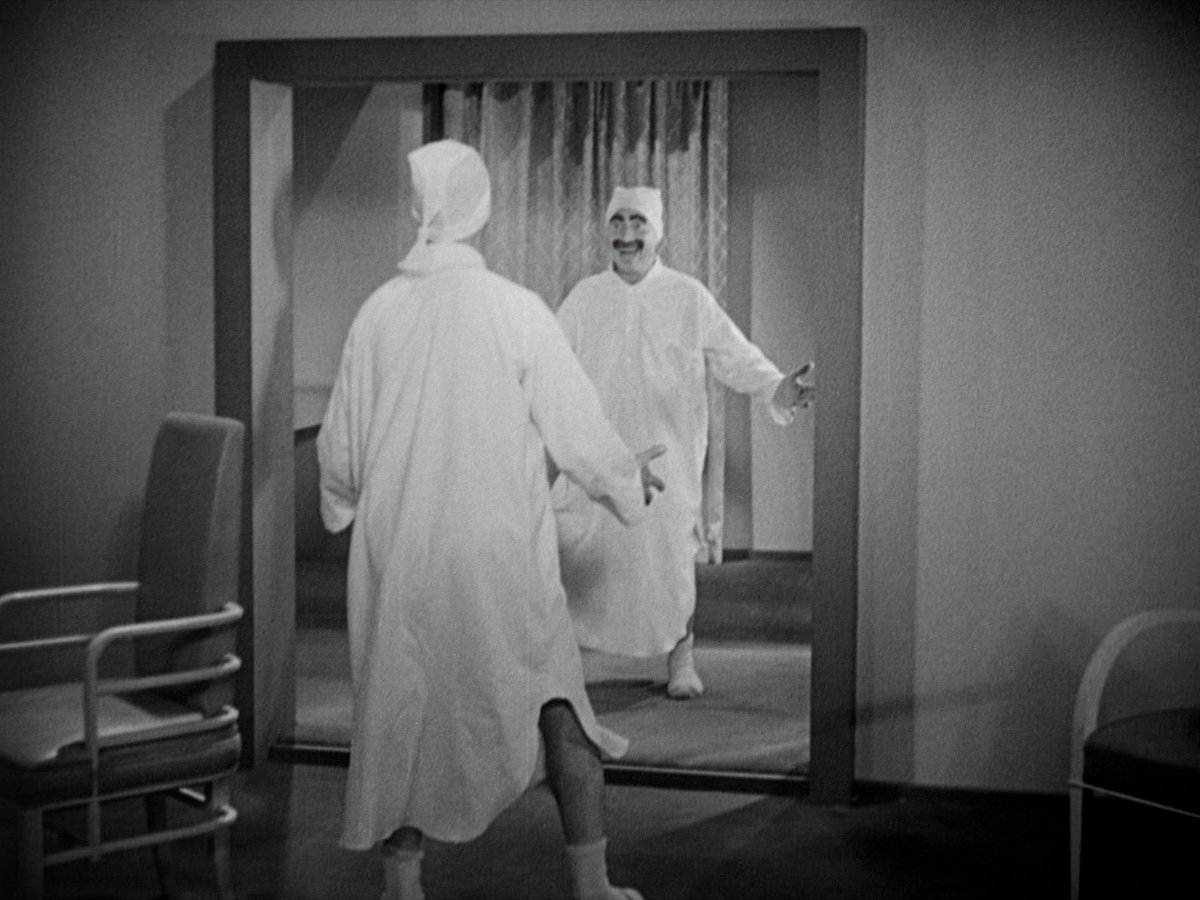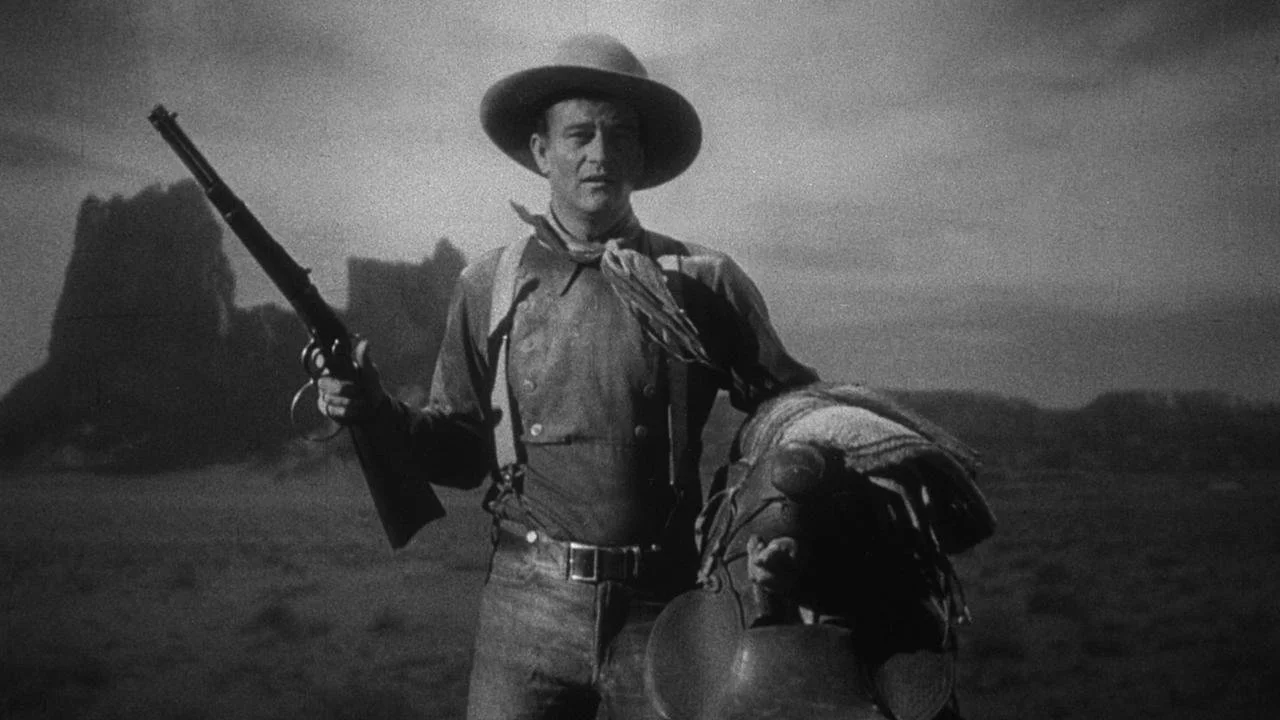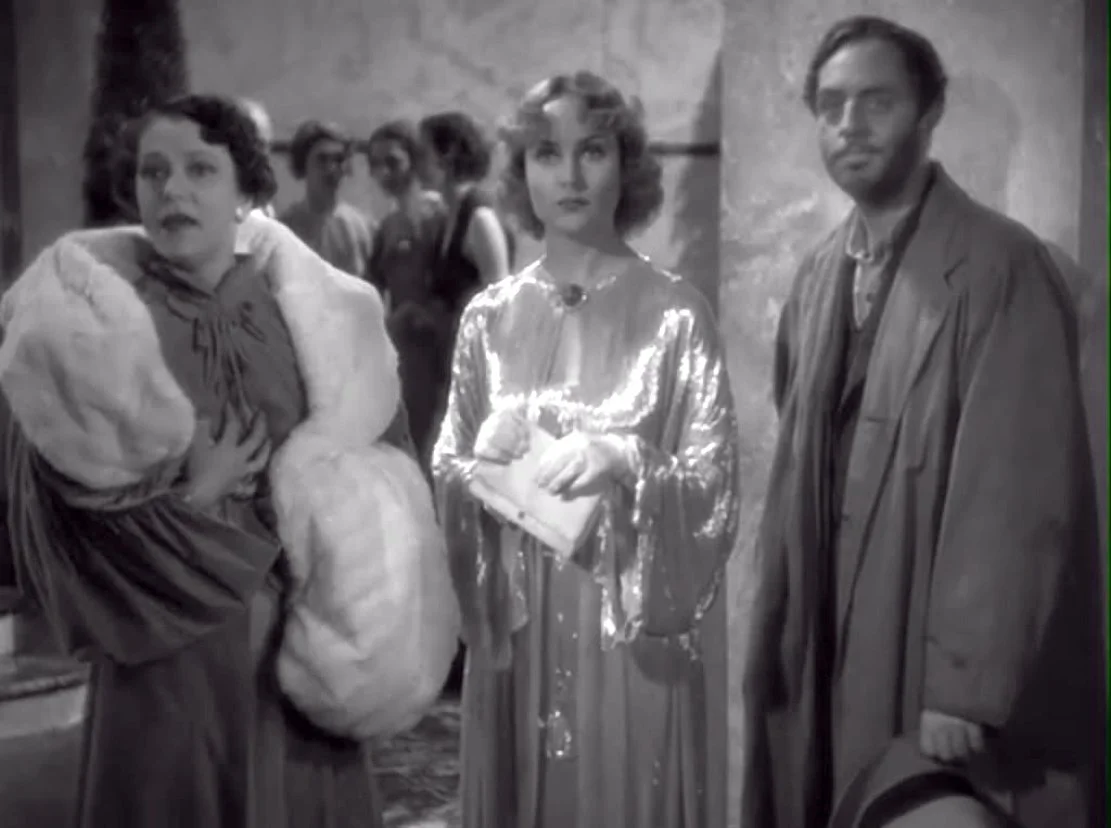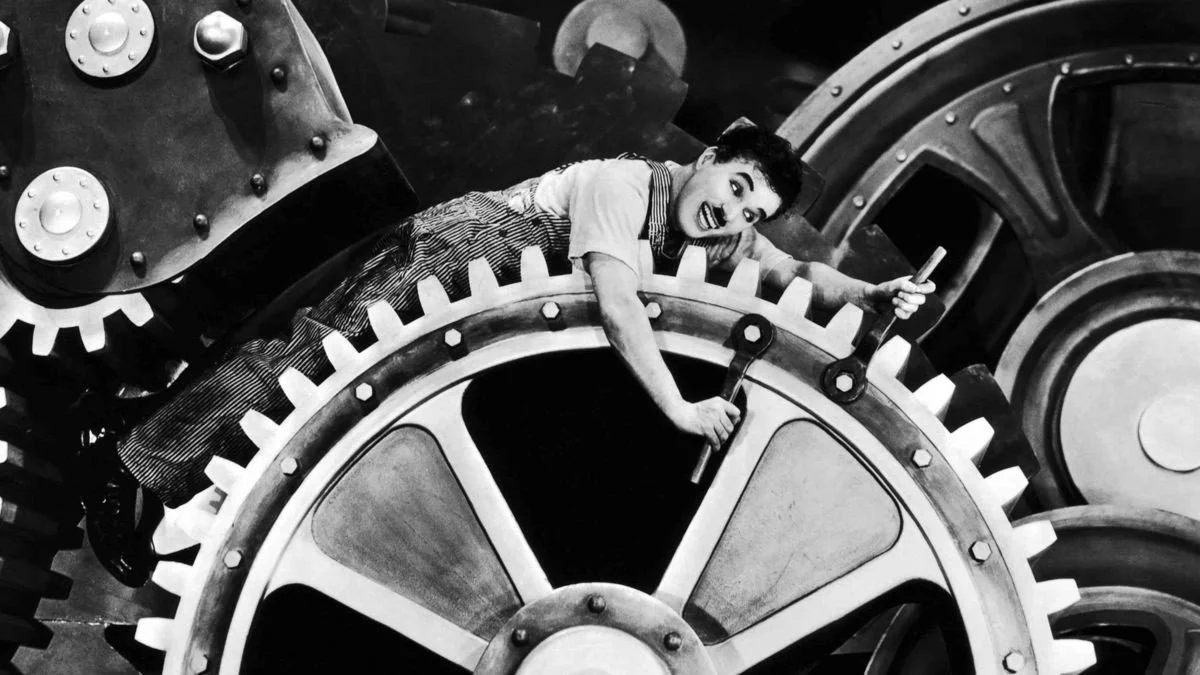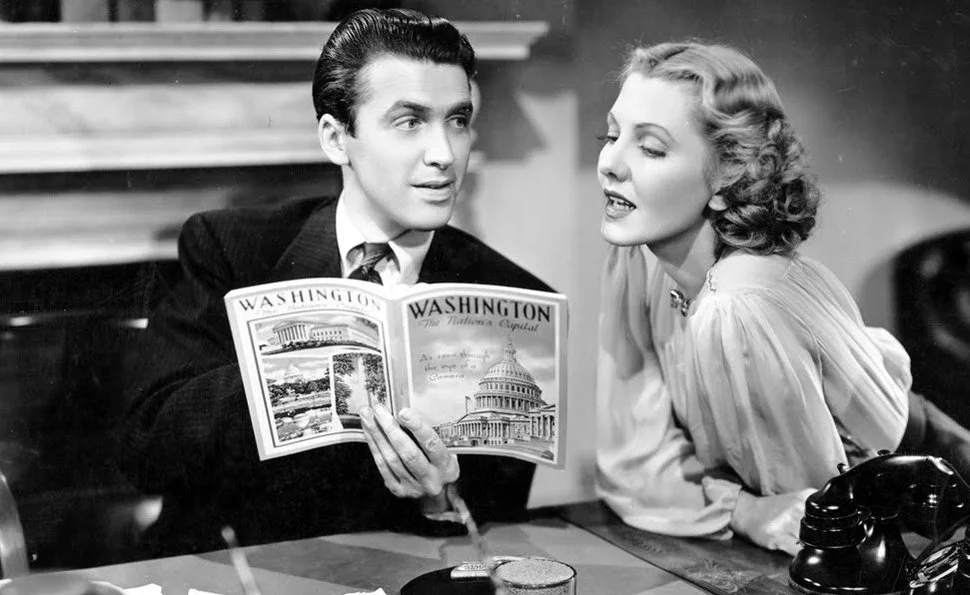30 Favorites of the ‘30s
The 1930s… It was the first decade of the talkies. It was the decade of Shirley Temple, the Marx Brothers, Laurel & Hardy, W.C. Fields, the Universal Studios Monsters, Fred Astaire and Ginger Rogers, Busby Berkley musicals, gangsters, and a lot of westerns.
It was the decade that sank many silent film stars and gave birth to a new golden age of stars like Katharine Hepburn, Cary Grant, Clark Gable, James Stewart, Fred Astaire, Jean Harlow, Myrna Loy, Spencer Tracy, James Cagney, and Judy Garland. And directors, too, like Alfred Hitchcock, Frank Capra, John Ford, and Howard Hawks.
Because it was the first decade of sound most pictures were filmed in a studio where they had to have complete control of the sound (see the movie Babylon for an example). So, cameras were usually in a fixed position, maybe with a zoom in or out of its subject; it wasn’t often you saw the camera move or directors get creative with the camera at all. And yet, despite this, there is a lot of great films to discover from this decade. I’ve seen over 60 films from the 1930s - and I’ve got around 10 more I’d like to see. But below are my favorites from the decade. May this be a guide for you of riches yet explored.
30. Mutiny on the Bounty (1935)
We ease into the list with a handful of films I like more than love, starting with this sea-faring drama about a sadistic and apathetic captain and the crew who dismissed rank and duty for dignity and justice. Charles Laughton is the definitive Captain Bligh. Clark Gable is the dashing mutineer Christian. It was the highest-grossing film and Best Picture winner for a reason.
29. The Little Princess (1939)
Shirley Temple filmed 19 full feature films between 1934 and 1939. That’s one hard-working child! It’s unclear what her net worth was, but by the time she was 11 Temple was the youngest top-billing star (and still may be), with merchandising based on her image, and even earned a special Academy award. This adaptation of the 1905 novel was her last big hit, as her star faded once she entered her teens.
28. The Hound of Baskervilles (1939)
Believe it or not, the first of 14 Sherlock Holmes films starring Basil Rathbone was not The Adventures of Sherlock Holmes of the same year, rather this film. Basil as Holmes and Nigel Bruce as Watson are a perfect pair in what is considered the greatest Sherlock Holmes film ever.
27. Wee Willie Winkie (1937)
John Ford directs Shirley Temple! To any cinephile that alone is intriguing. This is the earliest John Ford film I’ve seen, as he wasn’t yet the legendary filmmaker of cowboys, Indians, and the calvary that he would become in the following 20 years. Here he adapts a Rudyard Kipling story with Temple melting the hearts of British soldiers in India. It’s quite adorable.
26. Freaks (1932)
The early ‘30s was a time of absolute creative freedom, as the Hays Code, the precursor to the MPAA rating system was not yet enforced. Freaks is as pre-Code as you get. It’s a tale about a group of circus outcasts, rejected by society because of their physical deformities. A trapeze artist seduces and plots to kill one of them for his inheritance. The group welcomes her with open arms. This is where the chant “One of us!” comes from. Her porcelain beauty belies her wicked nature as their deformities bely their pure hearts. It is an unforgettable film directed by Tod Browning (Dracula).
25. Young Mr. Lincoln (1939)
This is another John Ford film. It’s briefly about Lincoln’s early years running for a legislative position and then as a lawyer in Illinois. It serves as half biopic and half court room drama. Henry Fonda elevates the film with his line readings and screen presence even with a prosthetic nose. I would say this and 2012’s Lincoln are the definitive Abraham Lincoln movies.
24. Heidi (1937)
In addition to her film with John Ford, Shirley Temple also had this film release in 1937. It is my favorite of Temple’s films. She is disposed by her aunt to her grandpa’s doorstep. Her grandfather has a terrible reputation in town for his temper and disposition. But it doesn’t take long for Temple to melt his heart. She is relentlessly optimistic in this film, always looking at the bright side of every moment. And she’s absolutely irresistible.
23. The Adventures of Robin Hood (1938)
This film, directed by Michael Curtiz (Casablanca), is one of the most iconic Robin Hood movies in the history of cinema. Action adventure star Errol Flynn wasn’t yet 30 here and had only been in films for three years before this one, most notably Captain Blood. Olivia de Havilland stars as Maid Marian, Claude Rains as Prince John, Basil Rathbone as Sir Guy of Ginsbourne, and Alan Hale as Little John - this was a star-studded production and an expensive one, too. It would be one of the year’s biggest hits. You can also see how Disney’s Robin Hood and Robin Hood: Prince of Thieves took from this film’s story.
22. Sons of the Desert (1933)
The decade brought a handful of comedy acts and Laurel and Hardy were among the most successful. The duo starred in countless short films in the Silent Era. This was their fourth full-feature vehicle. It stands the test of time, because it’s about these two guys who talk tough with chauvinistic “King of the Castle” airs, but are completely undercut by their wives. It’s a feminist movie in a way with the biggest blowhard (Ollie Hardy) getting his just deserts. The duo are hilarious here.
21. Dr. Jekyll and Mr. Hyde (1931)
This is an incredible pre-Code discovery. It is based on the Robert Louis Stevenson novel, but follows the plot of the first stage adaptation, which was extremely successful. This was Fredric March’s breakout role. He would go on to star in the original A Star is Born, I Married a Witch, The Best Years of Our Lives, and many successful adaptations of novels and plays in-between. What’s incredible about this film is its use of first person point of view and the split-screen swipes throughout. It’s also a great allegory for toxic masculinity and misogyny. What’s incredible is the film was remade 10 years later and there was an attempt by MGM to buy the rights to the previous film versions and destroy them. For a while this was considered lost completely. We’re so lucky it wasn’t.
20. The Invisible Man (1933)
The iconic Universal Studios monster movie with Claude Rains. It features some incredible visual effects and a wonderful vocal performance by Rains. For more info on this film check out my previous article on the Universal classic monster movies.
19. Boys Town (1938)
I think this is a great movie to introduce anyone to both Spencer Tracy and Mickey Rooney. Tracy plays a real life preacher who runs a home for underprivileged boys. Rooney plays his latest tough nut. Tracy plays the role with a lot of patience and compassion without being a pushover. And the cast of boys is pretty good, too. This is a very enjoyable true story.
18. Snow White & the Seven Dwarfs (1937)
The one that started an empire. Walt Disney Animation Studios’ films are probably the greatest contributor to the history of animation and pop culture. And it all started with this film. I gave a detailed review just over two years ago. Go there for more of my thoughts on this film.
17. The Wizard of Oz (1939)
Victor Fleming is the credited director, but 3 other directors worked on this film (Norman Taurog of Boys Town was originally assigned, but left after a few test shots): Richard Thorpe (Jailhouse Rock) shot for 9 days, George Cukor (The Women, Gaslight) changed Dorothy’s look and behavior to what we know, and King Vidor (The Champ) finished the production by shooting the first act’s Kansas scenes. In fact, Victor Fleming left the production to replace Cukor on Gone with the Wind. So, Cukor worked on Oz after Thorpe briefly before rushing off to Wind and then Fleming left Oz to replace Cukor on Wind. But Fleming did the bulk of the shooting for 6 months, so he got the credit. Somehow this masterpiece of Golden Age cinema never feels like a hodgepodge of filming styles despite the number of hands on it. It has since become a classic for generations of families.
16. M (1931)
Fritz Lang is most often attributed to his film Metropolis. But I prefer this early talkie that is credited for creating both the serial killer movie and the police procedural. A young Peter Lorre plays a man who is terrorizing a German town by luring and killing its children. The town is stricken with fear and paranoia. The police are looking for him for obvious reasons. But the criminal underworld is also looking for him, because the extra heat from the cops is bad for their business. So, there are two “mobs” on the hunt with the occasional mob from a panicked public. It’s a fantastically crafted film that creates parallels between the two groups. Plus, you don’t even see Lorre for most of the first act with his presence being largely felt by shadows and whistling.
15. Duck Soup (1933)
The Marx Brothers are a huge favorite of mine with Groucho especially being an influence on my sense of humor. I would love to be as sharp-tongued and quick-witted as he was. This is considered the troupe’s best film. It isn’t my absolute favorite, but it is famous for the mirror gag that has been imitated by the likes of Bugs Bunny, Mickey Mouse, Peter Sellers, Tom and Jerry, and even The X-Files. There’s also the hat swap at the lemonade stand. And the war finale’s absurdity makes sure to include references to various battles and wars throughout history via Groucho’s changing costumes and other visuals. It is a comedic masterpiece that every fan of the genre must witness.
14. The Women (1939)
This George Cukor film is one of my favorite discoveries of the past few years. It is one of the earliest great dialogue comedies. Based on a fairly new play at the time this film features not a single male on screen - even though men have a strong presence in the script. It also had a who’s who of the era’s best actresses sans Myrna Loy and Katharine Hepburn: Norma Shearer (Marie Antoinette), Joan Crawford (Whatever Happened to Baby Jane?), Rosalind Russell (His Girl Friday), Paulette Goddard (Modern Times), Joan Fontain (Rebecca), Virginia Grey (The Great Ziegfeld), Virginia Weidler (The Philadelphia Story), and more. It may be the ultimate “chick flick”, but if only chick flicks were usually written as well as this one!
13. City Lights (1931)
So, Chaplin entered the era of talkies with a silent film. This was his last full silent film. He was very resistant to the new technology, especially when it came to his beloved Tramp. And why fix what wasn’t broken? The man was a workhorse and knew what he was doing. For more of my thoughts on this film check out this article. This is one of the earliest great romantic comedies.
12. The Bride of Frankenstein (1935)
This film is a little campier and sillier than the original Frankenstein. But it does deepen the Monster character, which is one reason why it is considered the first great sequel in horror history. For more of my thoughts on this film check out this article.
11. Stagecoach (1939)
Now, John Ford had been building a long resume by this point. But it wasn’t until Wee Willie Winkie and this film that the filmmaker would start to become the legend he is known for (Young Mr. Lincoln would release four months after Stagecoach). Ford is better known for his westerns and his partnership with John Wayne. Wayne had acted in dozens of films the previous ten years and uncredited for several of them. It was John Ford who made Wayne a star. And you can see Ford’s intention the first moment Wayne appears: a zoom-in shot of the man with a rifle looking about as cowboy as he ever was. But beyond the breakthrough appearance of John Wayne this film is excellent as a story about a group of characters on a journey and in danger together. It’s a great ensemble piece with Claire Trevor (Key Largo), Andy Devine (Disney’s Robin Hood), John Carradine (The Grapes of Wrath), Thomas Mitchell (Mr. Smith Goes to Washington), Donald Meek (Young Mr. Lincoln), and more. It’s a terrific film and one of my favorite westerns of all time.
10. King Kong (1933)
King Kong is a film that delights children because of its exotic adventure into a land full of dinosaurs and wild creatures. And it delights adults because of how it thrills and has layers to it. There’s the overzealous filmmaker who wants to make a name for himself, making a spectacle out of a natural wonder. There’s the Beauty & the Beast aspect between the title character and Fay Wray’s Ann Darrow, which also taps into a growing monster/damsel trope. It’s also one of the most significant and influential creature features ever. It’s absolutely ubiquitous to pop culture, as it’s been referenced hundreds of times. Without Kong there’s no kaiju films. Period. But I also love it, because the stop-motion animation and other special effects are still really impressive. They manage to put a soul in Kong’s eyes, which is really incredible. There’s been a couple of remakes - and Peter Jackson’s film actually honored and filled out the original while improving on the racism towards the Skull Island natives - but, like most Golden Age classics, the original stands the test of time.
9. Dracula (1931)
Since 1922’s Nosferatu there have been countless vampire films - and dozens of Dracula films, as well. I think there’s probably about 10 vampire movies worth seeing and this is near the top of the list. It’s certainly at the top of any list of Dracula movies. Tod Browning, who would direct Freaks the next year, worked with Bela Lugosi to create an adaptation of Bram Stoker’s 1897 novel that would become iconic. Nobody who has heard of Dracula has never heard that famous Hungarian accent associated with the character. Lugosi’s version is definitive. For more thoughts on this film read this article I wrote.
8. Frankenstein (1931)
Of the 1930s Universal classic monster movies I have a hard time choosing between Dracula and Frankenstein in terms of a favorite. Perhaps that’s why they’re placed next to each other on this list. James Whale’s film, based on an even older novel (1818) by Mary Shelley, is where horror and science fiction met on film perhaps for the first time. It was a movie about a dead man walking around. But also a movie about a scientist misguidedly playing god. It is so incredibly complex, also, in terms of the themes it explored and the amount of grey area throughout it. Unlike most movies back then there really is no villain here. There’s a humanity to every major character. I go into this more in another article I encourage you to read. Regardless, Frankenstein is an incredible film that often gets treated reductively and misunderstood by the average person.
7. Bringing Up Baby (1938)
The screwball comedy was big in the ‘30s and ‘40s in a way that I don’t think it has been since. It certainly influenced a lot of the comedy genre since. But I think audience’s appetites have veered somewhat away from comedically labyrinthine plots and silly characters - outside of TV sitcoms, that is. Katharine Hepburn and Cary Grant should be the draw here. Director Howard Hawks was an incredibly versatile director who did the early gangster film Scarface (1932), but would also do the war hero biopic Sergeant York (1941), the noir films To Have and Have Not (1944) and The Big Sleep (1946), and the westerns Rio Bravo (1959) and El Dorado (1966). Here he dipped into comedy and created one of the greatest comedies ever. Hepburn is so daffy here you’ll either love her or hate her. But Grant is such a natural comedian as the put-upon paleontologist that gets sucked into Hepburn’s affairs. It’s a silly movie that eventually involves somehow the mistaken identity of a leopard, but also an “opposites attract” romantic comedy. And it is wonderful.
6. A Night at the Opera (1935)
This is my favorite Marx Brothers movie. There are 13 movies by the troupe that date between 1929 and 1947. I have only seen 4 of them (their first couple are reputed to be simple translations of their stage acts and their later films are considered poor). But A Night at the Opera edges out Duck Soup as my favorite. Some of it is because of the continued banter between Groucho and Margaret Dumont. But there’s also the stateroom scene, which, like the mirror scene in Duck Soup, has been imitated by so many, including Seinfeld, Animaniacs, Cyndi Lauper, and Sting. It’s just a hilarious movie. And, it may not quite reach the brilliance of Duck Soup, but it’s still one of the best comedies of the 1930s and, honestly, all time.
5. The Thin Man (1934)
I think William Powell is one of the most underrated actors of the Golden Age. And Myrna Loy is one of the most underrated actresses of the period. I say this having only seen a handful of his 90+ films. But Powell was one of the few to transition from silent film into talkies and thrive. By the time this murder mystery comedy came around he was in his forties and about to become a star. Myrna Loy was over 10 years his junior and every bit his equal in this film. She got her start right at the end of the Silent Era, but this film might have been her breakout role. The pair would do 6 Thin Man movies together - all of them considered solid films! I have yet to see any of the sequels myself. But the pair would star in another 8 films together, including The Great Ziegfeld, which won the Academy Award for Best Picture. But this film about a wealthy couple who drinks and solves mysteries for pleasure is an absolute delight.
4. My Man Godfrey (1936)
William Powell stars with Carole Lombard in another comedy about the upper class. It was the Great Depression. I don’t know how people afforded to go to the movies in a time when many needed to get in the bread line, but silly movies about the rich were popular at that time. This film is more cutting in that the wealthy family is full of loons. Powell plays a bum who is swept up in this family and hired as their butler. But it turns out he has a secret that eventually plays into a fantasy that probably appealed to the average person at the time. It’s a very silly movie - and I mean that as a compliment. Lombard, who would die 5 years later in a plane crash with her mother while rallying for war bonds, is over-the-top here, similarly to Hepburn in Bringing Up Baby. But Powell grounds the film with his unflappable demeanor. It’s comedic greatness.
3. Mr. Deeds Goes to Town (1936)
I’ve seen 8 of Frank Capra’s 20 talkie features (he directed 12 silents and several documentaries, especially during WWII). He’s one of my favorite directors of all time. Like the previous two films, this Depression-era film starring Gary Cooper as a small-town man who inherits a wealth of money and may lose it to a handful of scheming opportunists, appeals to the average person this time by painting the Haves as selfish and dishonest. Also, the title character represents the average person (especially of the mid-West) with an honest and generous heart. Cooper made a career out of playing the moral center of his stories and the country with films like Sergeant York and High Noon. He didn’t do many comedies, but when he did he put on an “awe, shucks!” Everyman charm that worked well for the material - especially this Capra charmer.
2. Modern Times (1936)
This is Chaplin’s masterpiece. He made a lot of great films. But Modern Times is probably his greatest work. It was Chaplin’s middle finger to the talkies. You might think City Lights, with its stubborn determination to remain silent at the beginning of the talkie era, was Chaplin’s statement to the new era. But by the time Modern Times was shooting Chaplin received a lot of pressure to transition like the rest of the world. He decided he would include sound… But only a corporate boss would talk and the Tramp would sing nonsense. You want to hear the Tramp talk? Well, stick it in your ear! This was the Tramp’s farewell. It was a statement of the era, for the Have Nots, about modern industrialization and its effects on the workers. And it’s hilarious. For more on this check out this article.
1. Mr. Smith Goes to Washington (1939)
My favorite film of the decade is the most political film I’ve seen from then and it comes from the greatest year of the decade. It is a Frank Capra film, starring James Stewart as a boy scout leader who is thrust into politics - and inadvertently gets in the way of a scheme to pass a bill for the personal gain of a handful of politicians. It is remarkable that a film from nearly 100 years ago - a time with many films about American heroes like Abraham Lincoln - would be so distrustful and cutting about politicians. It’s a film that loves the United States, loves democracy, and believes in its potential to serve We, The People and yet is criticizing those elected to help achieve that potential. The country was starting to come out of the Great Depression, but this film was about greed and the Haves manipulating the average citizen for their own personal gain. And doing so might involve hiring people who would be willing to put children’s lives at risk. It’s an incredible film. And Stewart is wonderful in it. Jean Arthur plays the cynical broad who eventually warms to him, which has its own significance to the film’s themes. I was bowled over by this film and fell hard for it. That’s why it’s among my 10 favorite movies of all time.
So, those are my favorite movies of the 1930s. Throughout the decade, the year 1939 made the list the most with 7 films. Only 1931, with its dark pre-Code horror and crime films came close to matching it with 5 films. No films from the year 1930 made my list.
Again, the best resources for films from this decade are Amazon Prime and HBO Max. You can also rent many films on Amazon. I hope you find some new favorites. What are some of your favorites from the decade already? Feel free to share.
